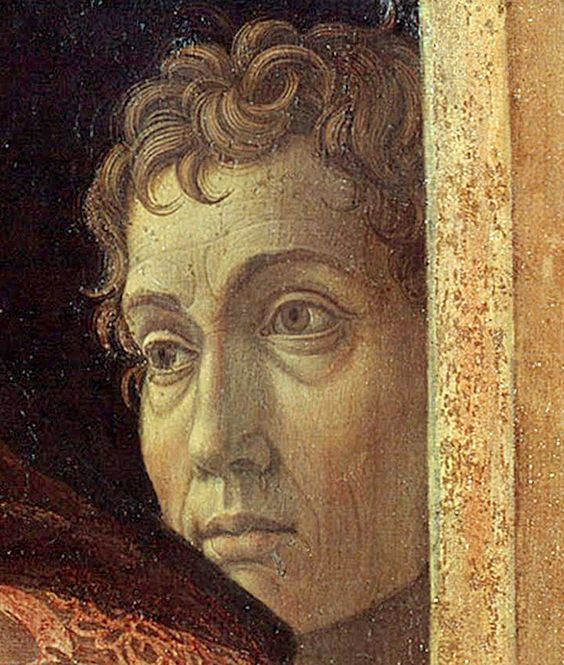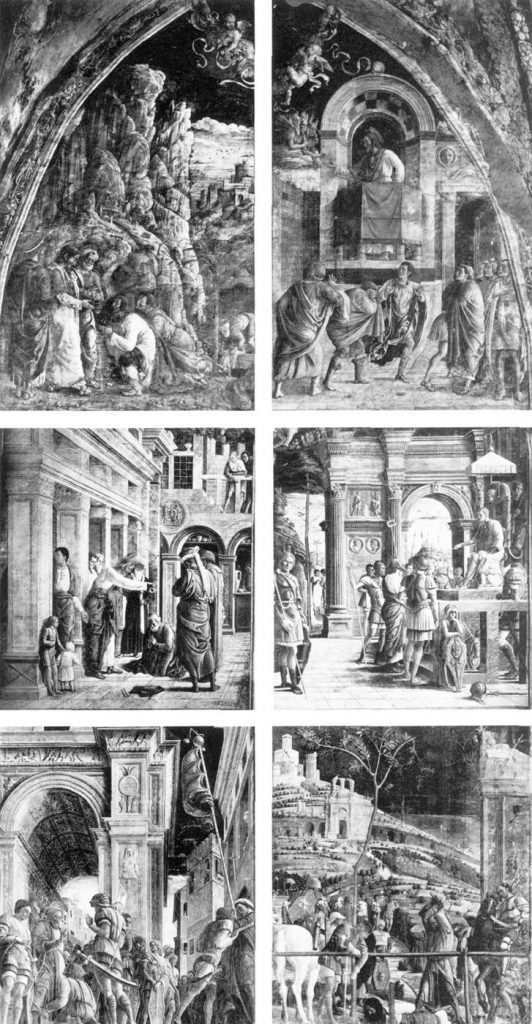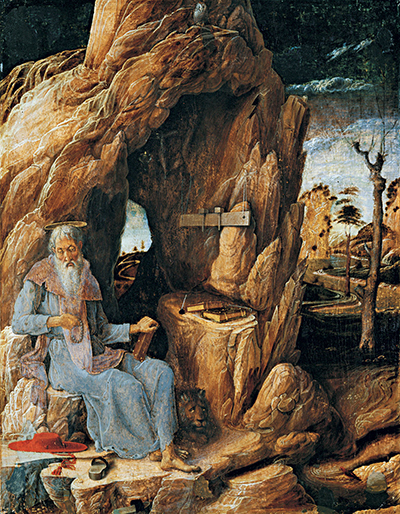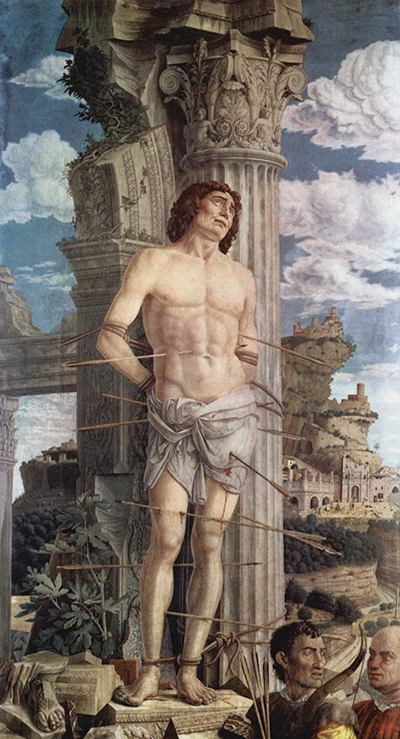Andrea Mantegna
(1431-1506)

Andrea Mantegna was a talented painter from the Early Renaissance period where he spent most of his life in the North of Italy in Padua and Mantua. Heavily influenced by the new art of Donatello and Masaccio. He too mastered the art of perspective drawing and adapted light and shade into his work which helped with the depth and the overall appearance of his art.
When Mantegna was painting he tried to see the scene as a stage as if he was actually there and what he desired was to recreate the scene down to the very last detail. Like Giotto, he wanted to know the inner meaning of the story and recreate how people would react, but he also was very curious about the external details of the situation.

The painting above is an illustration series of St James. One of Mantegna’s most known paintings that shows great external details and the movement and flow of the people in the scene. To portray the scene properly he started to study in-depth about Ancient Rome, from their architecture down to the clothing that they would wear. He shied away from over powering colourful and joyous international style drawings and kept his centrepiece figures towering and powerful.
Most of Mantegna’s art was destroyed in World War 2, but they say that some of his paintings were “among the greatest works of all time”(Gombrich, 257). You can see by his artwork that he thought that ancient art was superior and that he did not overdo sensual expression or create overly joyful artworks, but I think we can all agree that he was one of the masters of perspective, light and shade.


I really enjoy the use of dulled down colours and the way that Mantegna sets up a “stage”. Although the expressions of his characters are not his main focus I still think that he does a good job portraying the emotion of his subjects and the overall tone of the painting. My favourite piece is St. Sebastian for the soft colours, the towering figure and the use of perspective.
Resources:
Gombrich, E. H. (1966). The story of art. New York: Phaidon Publishers; distributed by Oxford University Press.


Sarah,
Good work on Mantegna! Looks like he really resonates with you. I was looking up some images of his when I saw your post here and those paintings in the Ovetari Chapelle in Padua (those B/W captures) were indeed destroyed by Allied bombs in WWII… a real pity. Anyhow like your research and your personal thoughts and feelings are just what I’m looking for in these posts.
Jeff